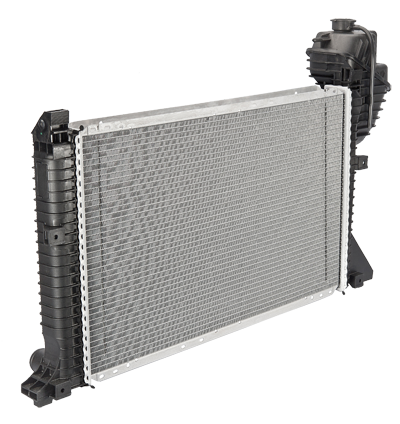
The cooling system of your car, SUV, truck, or van needs to be checked regularly. Do-it-your checks (described below) should be done at least twice a year, and summer and winter are good reminders. A properly filled radiator keeps your engine cool and prevents boil overs that can leave you stranded. Or worse yet tempted to keep on driving and risk major engine damage. Aside from a temporary fix in a roadside emergency, never add plain water. As we’re about to see, maintaining the proper coolant is important even in warm climates such as San Diego’s.
“Anti-Freeze” Does More
Ethylene glycol is almost universally the main ingredient of antifreeze solutions. It only freezes at or below 8 degrees Fahrenheit, whereas water freezes at 32 degrees F. That’s great if you’re heading off for a ski trip, but engine coolants do a lot more.
First, in addition to lowering the freezing point, ethylene glycol also raises the boiling point. The normal boiling point of water is 212 degrees F, but under pressure in the cooling system that’s more like 250 degrees F. Mixing in antifreeze raises that by roughly 20 degrees, letting the radiator dump a bit more heat before experiencing a boil over. But ethylene glycol has only some 65% the heat capacity (say, the amount of energy needed to raise 1 pound 1 degree). That’s why we still mix in a significant amount of water.
Second, and most important in our area, coolants also include several additives. They protect against rust and corrosion and in particular help protect seals and water pump bearings, extending the lifetime of your vehicle.
Things To Do Yourself
Today’s cars have become so reliable, and the days of full-service gas stations are so long gone, that most people have forgotten that there are things that should be frequently inspected. In addition to checking the oil level as well as that of brake fluid and power steering fluid, you should also perform some checks on the radiator roughly once a month.
Only when the engine is completely cold (otherwise that 250 degrees becomes 212 and you get a mini steam explosion), remove the radiator cap and make sure that the coolant is completely covering the inner metal core. If not, it’s time to add more. In San Diego the recommendation is typically a mixture of 50% “antifreeze” and 50% water. Or 70%/30% if you’re about to travel into cold locations. In some rare situations 25%/75% might be used. Never mix the coolant with hard water, as that can lead to scale build up that reduces cooling efficiency and might even damage cooling system parts. Use distilled water instead. Or more conveniently just purchase pre-mixed coolants. Keep some in the trunk in case you ever need it.
Before replacing the radiator cap, take a look for any damage, especially on the “rubber” seal. You should also check that the liquid level in the overflow tank is between the two lines (too low suggests that there’s not enough coolant, and too much is likely to spill over and be wasted), and that the cap and the small tube to the radiator are properly seated. Finally check the radiator hoses for wear, cracks, or cuts.
Regular Radiator and Cooling System Service
The water pump and cooling-system thermostat also need regular inspections, but it often takes a trained mechanic to spot any problems. At Pacific Automotive we’re happy to do that as part of an oil change or other servicing.
In warm climates like San Diego it’s also important to completely drain, flush, and then refill the cooling system. Why? Contaminants can slowly build up, antifreeze degrades and becomes acidic, and additives slowly loose their effectiveness.
Thanks for Reading
We hope this has been helpful. Just call us if you have any concerns or questions.
